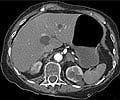
Fenelon found that in the Central South, mortality attributable to smoking peaked later than in other regions and at a significantly higher death rate, indicating a greater and more persistent burden of smoking. By 2004, the gap in mortality attributable to smoking between the Central Southern states and states in other regions was exceptionally large: among men, smoking explained as much as 75 percent of the difference between the Central South and other US regions.
Laws and policies in the Central South do not strongly discourage smoking. There are currently 10 states with no statewide ban on smoking (for example, in workplaces or restaurants); nearly all of these states are in the South. State taxes on tobacco products also remain low in the Central Southern states compared to other states with lower mortality from smoking. Studies have shown that smoking bans and tobacco taxes reduce the prevalence of smoking.
This study highlights geographic inequalities in health and mortality within the US and underscores the importance of narrowing these gaps as a public policy goal.
Source-Eurekalert













